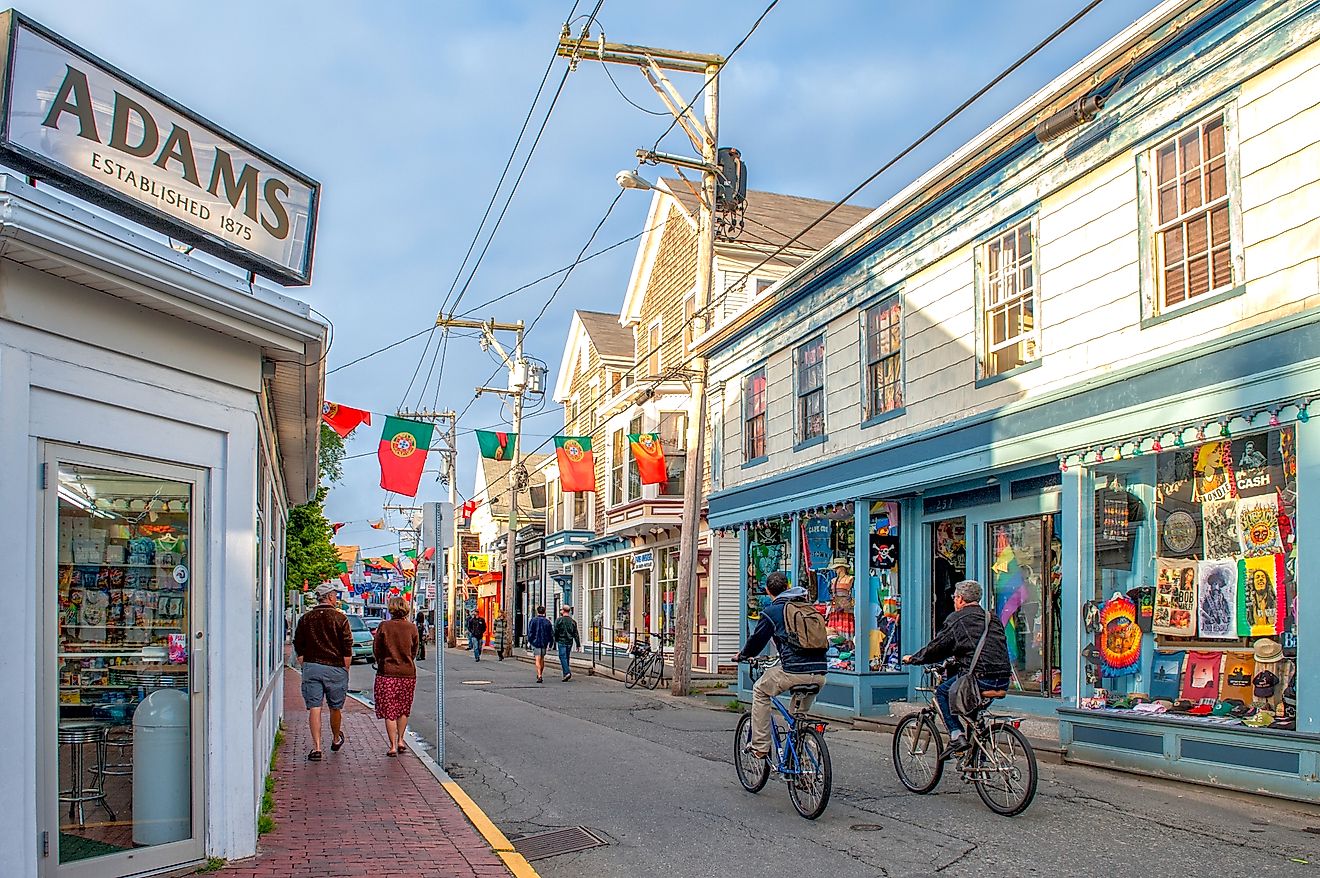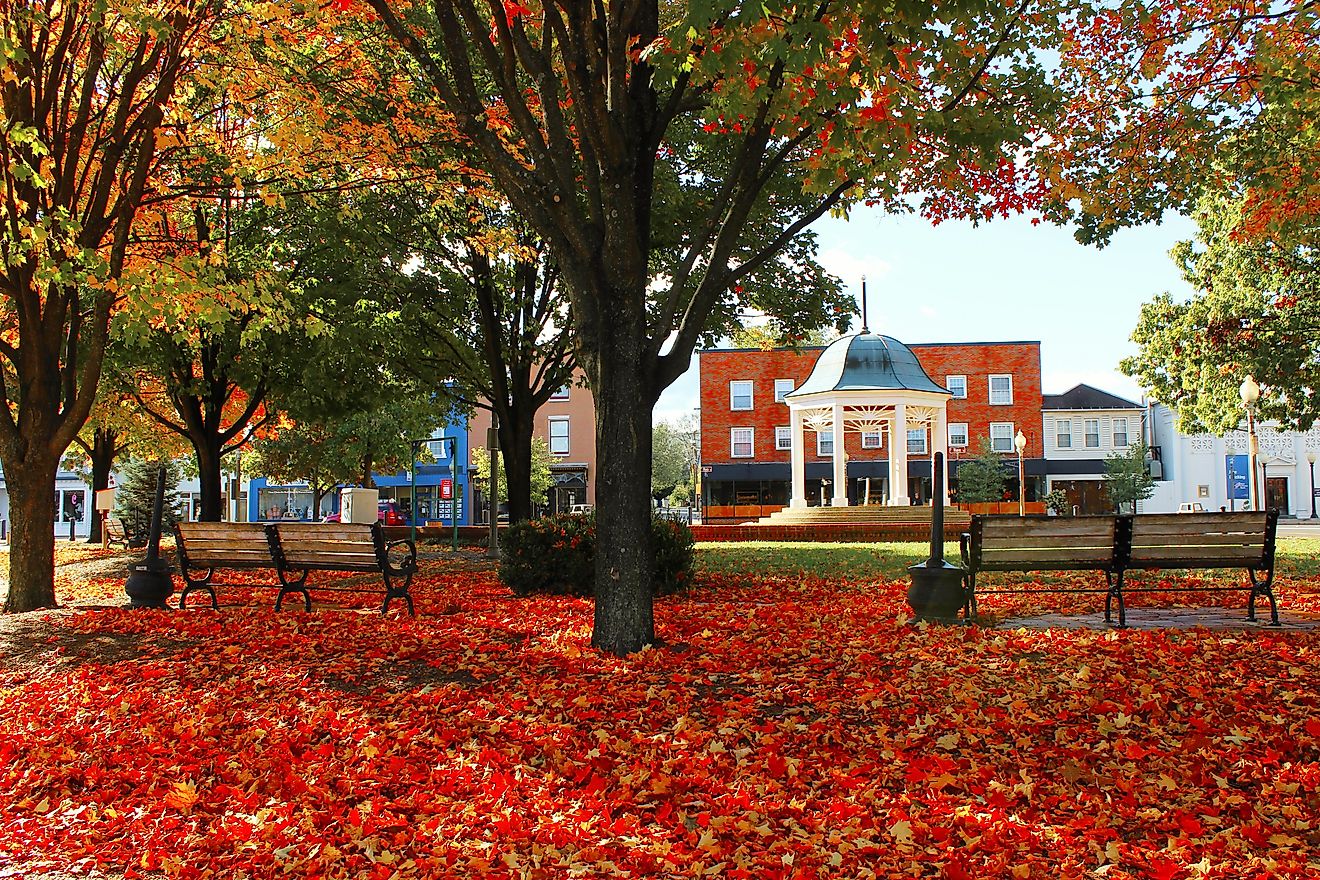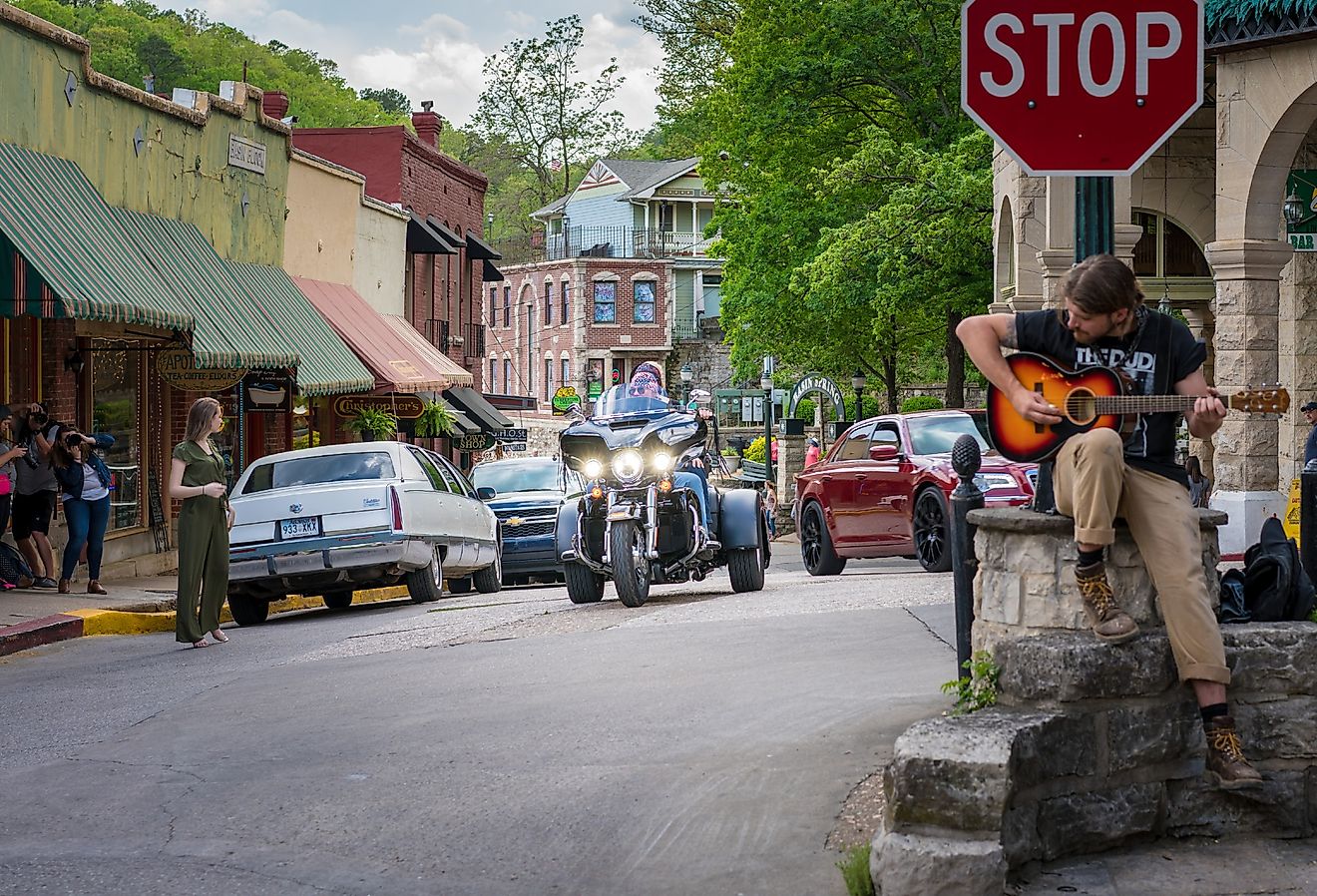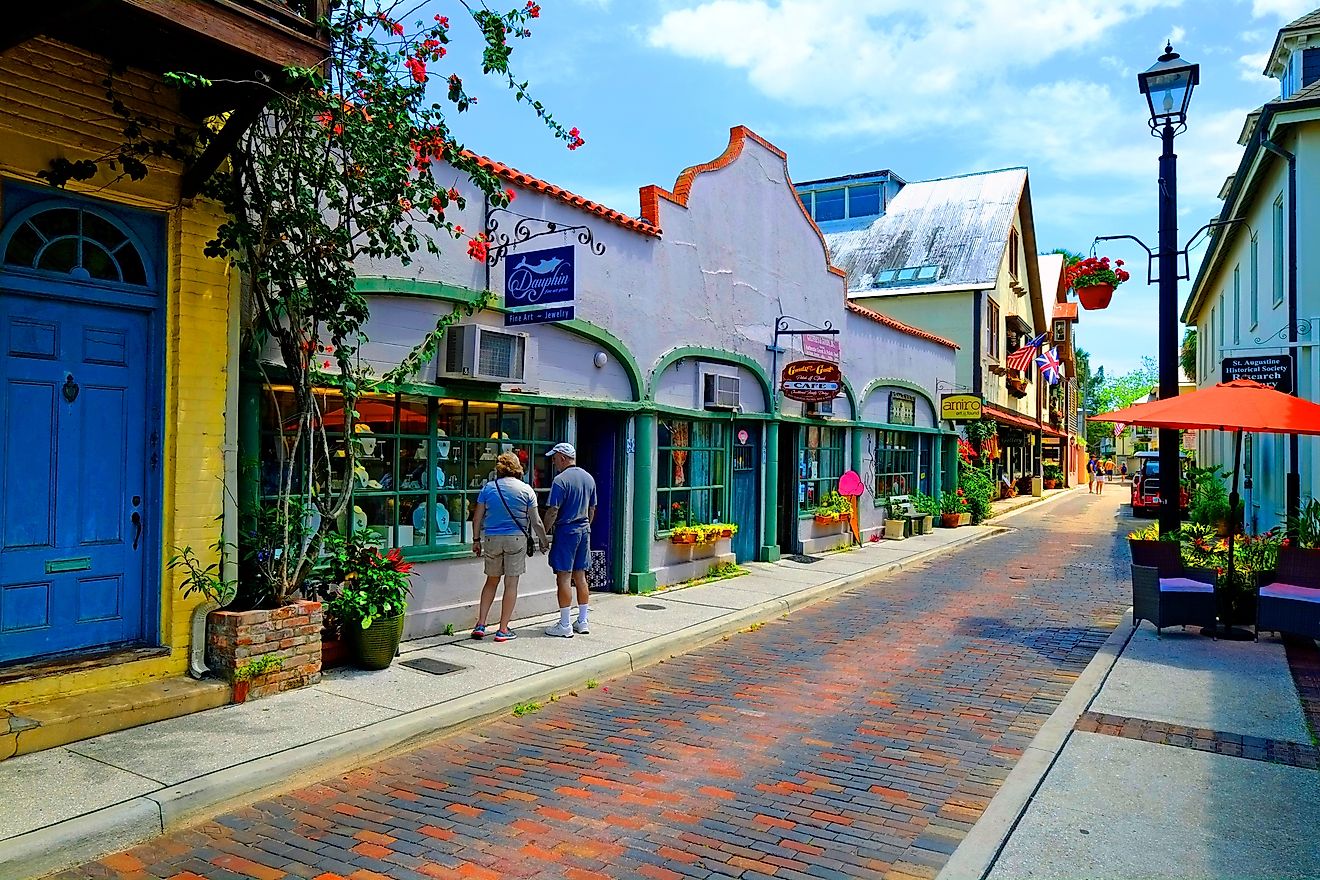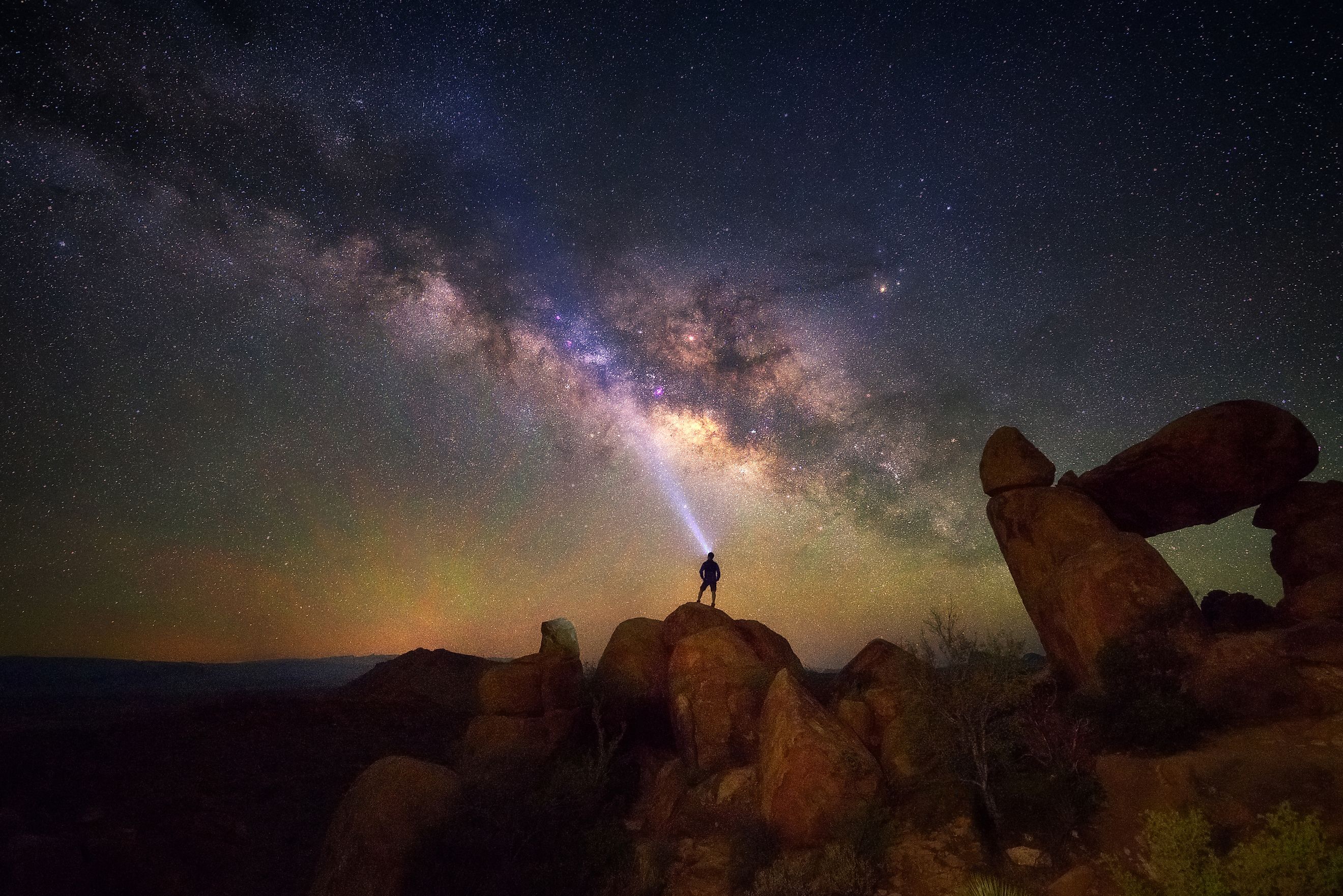
Stargazing Heaven: Big Bend National Park’s Milky Way Uninterrupted Wilderness
Tucked away in the western part of Texas is a vast land that is about the size of Rhode Island. Known as Big Bend National Park, perhaps a more befitting name would be a star-gazing haven, as it just feels like a front-row seat to the beautiful sights of the Milky Way. This unobstructed wilderness is biologically diverse, geologically fascinating, and historically interesting. However, it is even more magical in its isolated location in the Chihuahuan Desert, far from the light pollutants that reduce the visibility of the sky in modern cities. In 2012, the park was even designated an international dark-sky park, and many have called it the best place to see the wonders of the Milky Way in the United States.
Just a day spent in such a remote expanse is sure to be mesmerizing, but that is certainly not enough time to discover the living things that call this place home, the multi-million-year-old rocks and fossils, and the Rio Grande that has relentlessly carved stunning canyons for millions of years. Not to mention the park’s rare features that cannot be found anywhere else in the country. Read on to discover the wonders of this vast wilderness and why you should be right there this moment, watching its skies.
Location, Geography, and Brief History of Big Bend National Park

The area now known as Big Bend is a vast expanse in the Chihuahuan Desert region of West Texas. It is the US's largest protected area of the Chihuahuan Desert and borders the Texas-Mexico border. The park is located 50 miles south of Marathon and around 75 miles from Alpine.
From the area’s earliest geological activity, about 500 million years ago, Big Bend has been inhabited by several species and cultures, including dinosaurs, a desert hunter-gatherer culture, and, more recently, the Chisos Indians and Europeans. In the 1930s, folks who fell in love with the area thought it wise to preserve the land for future generations. By 1935, the national park was established and named for the spot where the Rio Grande makes a sharp turn from a southeastern to a northeastern flow.
Today, Big Bend National Park remains a vast landscape covering a roughly 801,000-acre area and full of interesting fauna and flora, geological formations, and a portion of the Rio Grande, the fifth longest river in North America. Meanwhile, interesting fauna and flora thrive across this sprawling expanse. Over 450 species of birds, 1,200 species of plants, and dozens of reptile and mammal species have been recorded in the park. A few of these species include: yucca and lechuguilla plants, alongside mammals like Black bears and bobcats. Additionally, the park features a few plant species that cannot be found anywhere else in the US, including Chisos Oak, and a new species recently discovered in the area known as the woolly devil.
Signature Landmarks

Big Bend National Park is home to a long list of fascinating landmarks, but the Chisos Mountains are no doubt the most famous of these landmarks, covering a 40-square-mile area. This mountain range is a beauty to behold and is known for many things, including being the southernmost mountain range in the mainland United States and the only mountain range contained within a national park. The mountain’s highest peak is Emory Peak, which rises 7,825 feet above sea level. Other peaks include the 7,574 feet Townsend Point and the Lost Mine Peak, which is 7,535 feet. There are many ways to explore this mountain range, including by driving a long paved road, camping, and hiking. The mountains also offer closer and better views of the clear skies and the beautiful sights of the Milky Way, especially at night.
Big Bend National Park is home to 118 miles of the fourth-longest river in the United States. This river offers one of the best ways to explore the park and is responsible for forming numerous canyons across the area today. The Santa Elena Canyon is the most popular of these canyons, with cliffs standing up to 1,500 feet and best explored by rafting or canoeing. Also, a 1.6-mile trail that crosses a seasonal creek offers access to the canyon’s depths. This trail can be reached via the 30-mile Ross Maxwell Scenic Drive. Walking between the towering walls of this 8-mile-long canyon is one of the best things to do in Big Bend National Park.
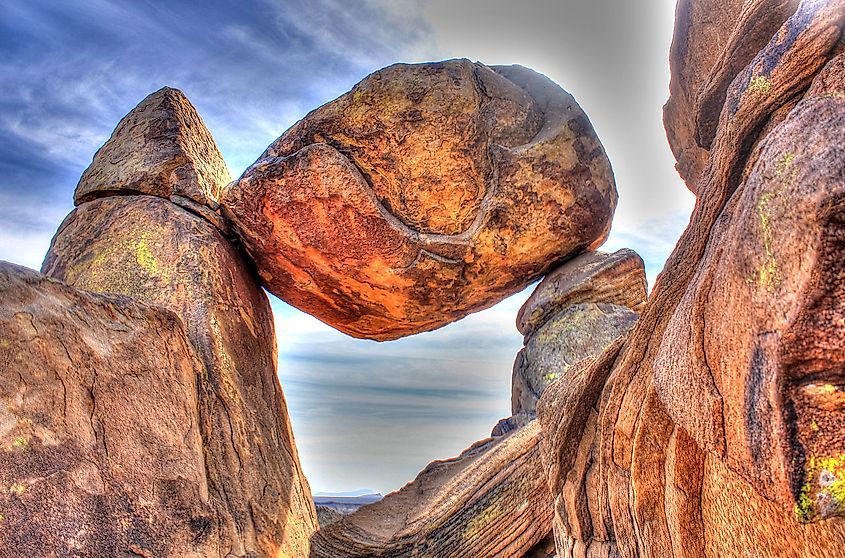
Balanced Rock is also one of Big Bend’s unique natural landmarks. This gravity-defying rock is super interesting because it looks like it’s about to give way at any time, yet it has been standing for millions of years after being carved by erosion. The interesting rock formation can be reached by hiking the Grapevine Hills Trail, which is a two-mile round-trip.
Top Things to Do In Big Bend National Park
Stargazing
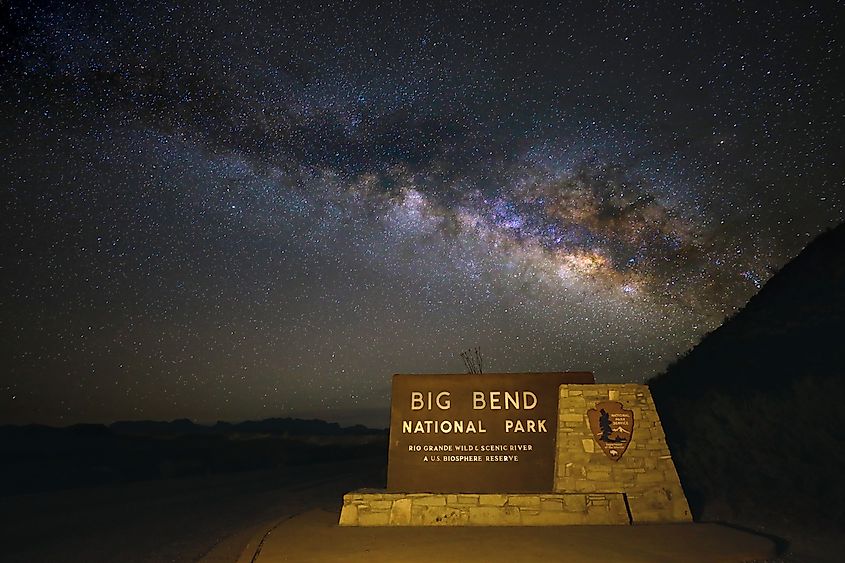
There are many things to do in Big Bend, but stargazing remains the most popular. As an international dark sky park with the least light pollution of any other park in the lower 48 states, stargazing in Big Bend is one of the most unique experiences anyone can have. On clear nights, stargazers will enjoy beautiful sights of constellations, thousands of stars, distant planets, and the exciting Perseid Meteor Shower, which usually occurs between mid-July and late August.
Regular night sky programs are available throughout the year for stargazing in Big Bend, although visitors are welcome to go stargazing individually by moving away from crowded areas with disruptive lights. At the park’s campsites, facilities like a red entry light and a red light flashlight are available to help preserve night vision and enhance the stargazing experience. Visitors are also encouraged to rent binoculars and avoid using bright lights or flash photography for better views of the Milky Way.
Stargazing can be enjoyed in Big Bend year-round when it is not raining or about to rain. Spring and Fall are generally the best times to enjoy this experience due to less rainfall and comfortable temperatures. However, summer is also ideal for stargazing, even with the hot temperatures and frequent rains.
Camping and Lodging
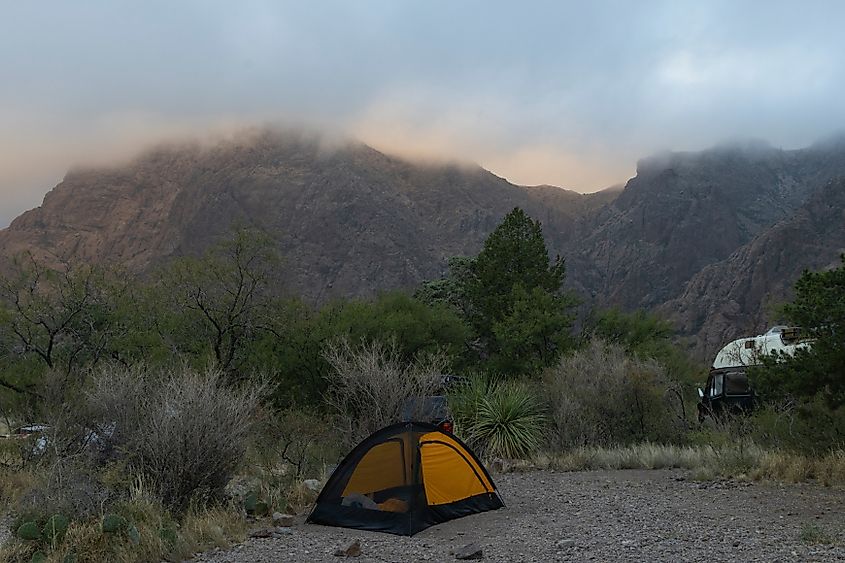
Big Bend National Park offers many accommodations, from modern campsites and lodges to primitive campsites. The park has three developed campgrounds: Chisos Basin, Rio Grande Village, and Cottonwood Campground. Reservations are required at all campgrounds as the park does not operate on a first-come, first-served basis. Chisos Basin Campground is the park’s most famous campground, located on Chisos Mountain basin, and offering views of Emory Peak and Casa Grande. Some of the park’s exciting trails, like Window Trail, start from this campground.
Nearby, Star Struck Glamping also offers a luxurious camping experience for visitors to Big Bend. This glampsite is remote, and has a wide range of facilities including a private outdoor lounge, an outdoor dining & kitchen area, and air-conditioned rooms with queen beds and stunning mountain and sky views. Visitors are invited to stay in any of the park’s campsites and the nearby glampsite to better enjoy a pleasant stargazing experience, as they all have facilities aimed at offering optimal views. At the Star Struck Glamping, the rooms have large windows for those who would like to fall asleep while gazing at the heavenly displays.
Hiking

Hiking is the most popular activity in Big Bend, and the park has over 150 miles of trails to offer. The Lost Mine Trail is arguably the most famous hike in the park, offering breathtaking scenery of the mountains and desert. The trail is 4.8 miles round trip and takes an average of three hours to complete.
The Window Trail is also exciting as it takes hikers on a rewarding three-hour adventure through a beautiful canyon, with beautiful sights and views of the desert, alpine forest, and rock. The Oak Creek flows through the canyon during wetter months; caution is recommended when hiking in these conditions. The Window Trail is a four-mile round-trip starting from the Chisos Basin Campground and 5.5 miles out-and-back from the Chisos Basin Trailhead. For experienced backpackers, the South Rim is a challenging 12.5-mile loop trail that can take the entire day to complete. However strenuous it can be, this trail is considered one of the best in the park as it offers expansive views of its mountains and canyons.
Boating and Paddling
Boating and paddling on the Rio Grande is a relaxing way to explore the natural wonders of Big Bend National Park. Several outfitters are available in the park, offering guided trips and equipment rentals. Experienced paddlers are also welcome to bring gear or rent from the outfitters and explore the river solo. The river is generally easy to navigate with rapids rarely exceeding Class II, and guided trips can last between a few hours and several days, depending on the canyon being explored. Floating through the Boquillas Canyon, for instance, can take between two and four days to complete, as it is the longest and deepest canyon in the park. Regardless of which part of the river you are on, paddlers will enjoy sights of wondrous canyons and wildlife such as beavers and Great Blue Herons.
Scenic Driving
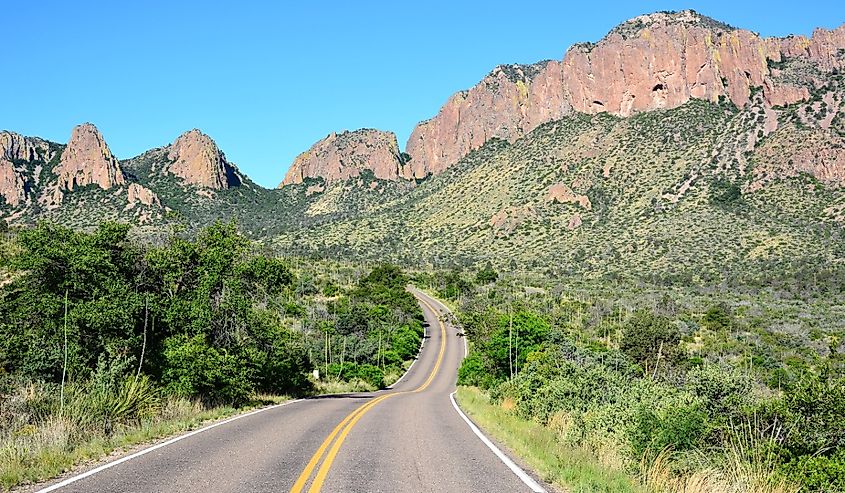
Driving is the easiest and fastest way to explore Big Bend National Park, and over 100 miles of paved roads are available for this. The Ross Maxwell Scenic Drive is the most famous in the park, stretching for 30 miles and showcasing some of the park’s iconic sights. The road has several overlooks featuring sights of canyons and the desert. It also leads to multiple trailheads, including the Santa Elena Canyon trailhead that leads to the park’s most famous canyon. The six-mile Chisos Basin Road is another exciting drive in Big Bend, offering breathtaking views of the mountain peaks.
Seasonal Tips

Big Bend National Park is a pleasant place to visit year-round, but some seasons offer more pleasant experiences. In summer, the hot weather is accompanied by frequent rains, which can reduce the chances of a good stargazing experience. However, opportunities still abound for stargazing throughout the season, plus the crowds are generally smaller in summer, making the experience more intimate and relaxing if you know how to handle the heat.
Big Bend is best explored between October and April, as the weather is generally pleasant, with less rain and lower temperatures. The skies are also darker during this period, especially in winter. However, this is peak season in the park, meaning hotels and campgrounds fill up faster, and famous attractions often get crowded.
In the meantime, visitors to Big Bend across all seasons are encouraged to help keep the area free from too many lights, especially at night, for satisfying stargazing experiences. Also, it is always important to make advance reservations for camping and lodging, dress according to the weather, and carry plenty of water when outside during the day, as it is mostly sunny year-round. Moreover, midday activities during summer should be generally avoided. Pets are typically allowed in Big Bend but not permitted to be on trails, off roads, or on the river. Besides hot temperatures, predators are a serious threat to pets.
Big Bend National Park is worth visiting at least once in a lifetime for an incredible stargazing experience. Here, it feels like the Milky Way is one short leap away, especially at night when the sky lights up with sights of countless stars, deep sky objects, passing meteors, and planets. Only a few other places like this exist on the entire planet, and Big Bend is the best of its kind in the Mainland US. In addition to the stargazing opportunities available in this park, the mountain and desert landscape, plus the Rio Grande, further make this park a delightful outdoor destination worth visiting year-round.



